3D molding and printing, the future of the shoe industry. Maybe? Still in its infancy, 3D printing is expensive, complicated, and, so far, not very public. A Baltimore-based brand aims to change all of these with the introduction of the Under Armour Architech.
Granted, they are still expensive, super limited, and possibly the most involved design and process ever in shoes (the Foamposite in 1996-1997 may come close). All of this is great, except…what if they suck? What if they don’t perform as designed or worse, don’t perform at all?
Just in case you haven’t watched the “unboxing/initial thoughts” video, this is a cross-training shoe that we took to the gym, the courts, and the road — that’s proper cross-training.
Traction
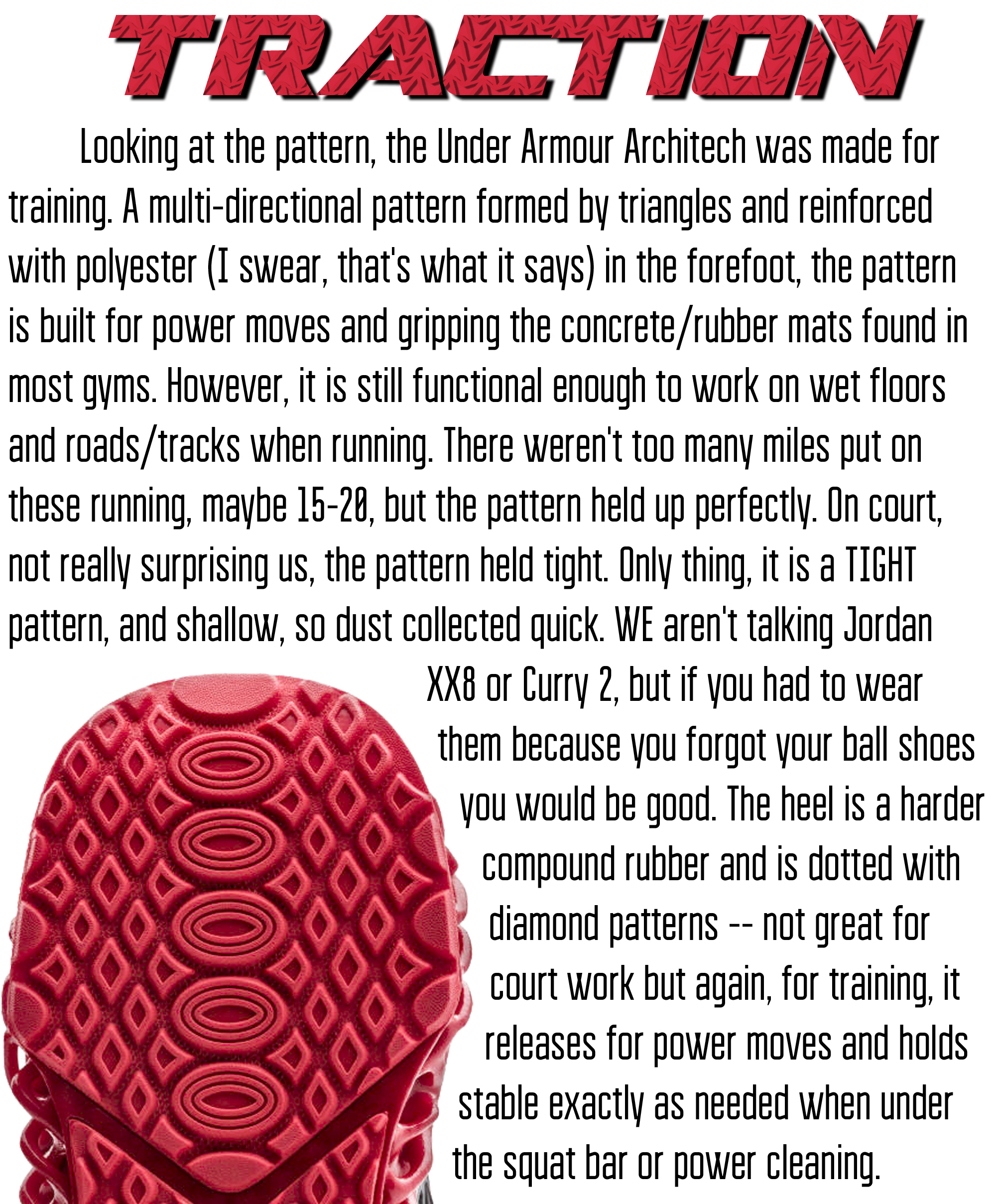
Looking at the pattern, the Under Armour Architech was made for training. A multi-directional pattern formed by triangles and reinforced with polyester (I swear, that’s what it says) in the forefoot, the pattern is built for power moves and gripping the concrete/rubber mats found in most gyms. However, it is still functional enough to work on wet floors and roads/tracks when running. There weren’t too many miles put on these running, maybe 15-20, but the pattern held up perfectly.
On court, not really surprising us, the pattern held tight. Only thing, it is a TIGHT pattern, and shallow, so dust collected quick. WE aren’t talking Jordan XX8 or Curry 2, but if you had to wear them because you forgot your ball shoes you would be good. The heel is a harder compound rubber and is dotted with diamond patterns — not great for court work but again, for training, it releases for power moves and holds stable exactly as needed when under the squat bar or power cleaning.
Cushion
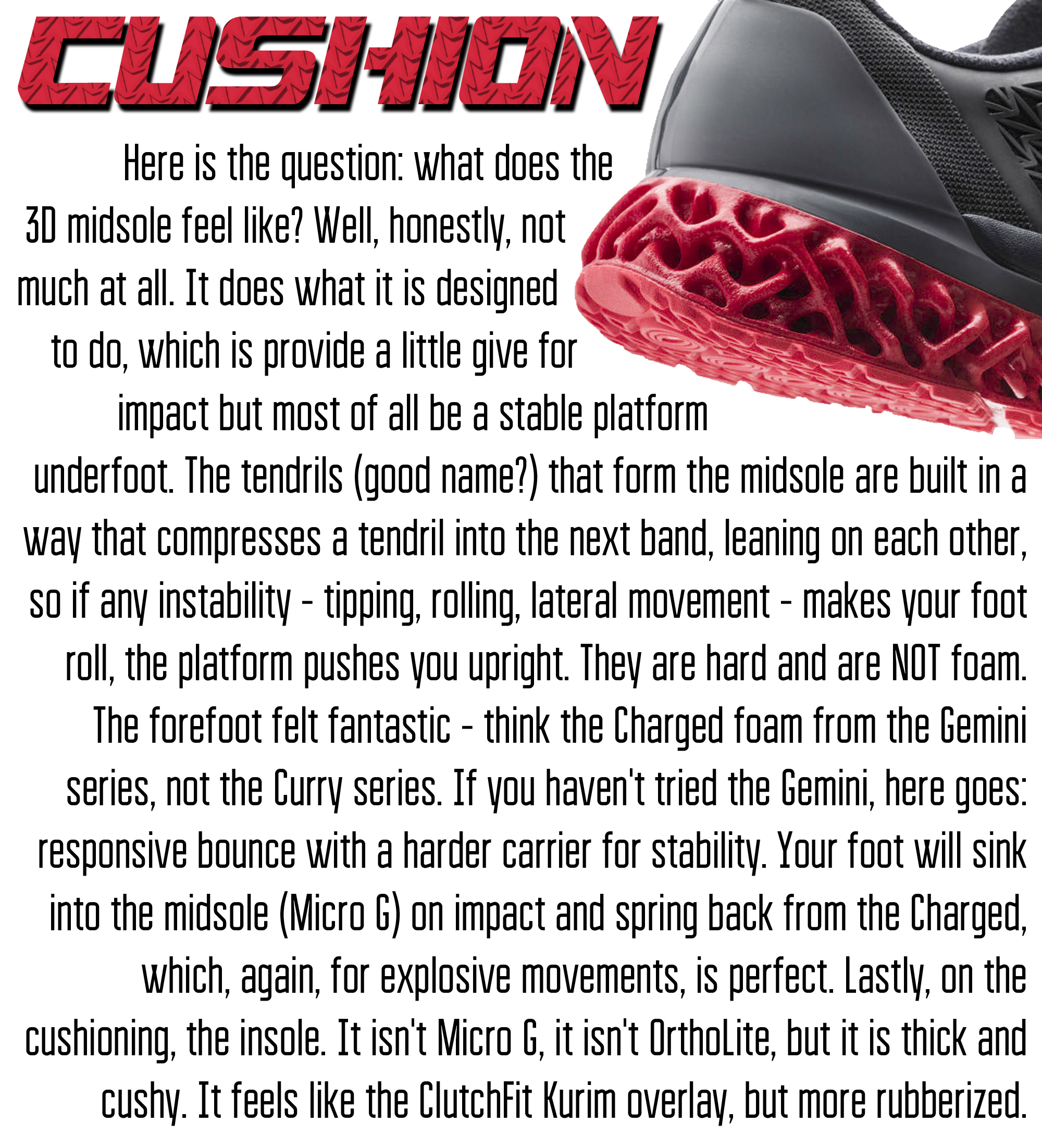
Here is THE question: what does the 3D midsole feel like? Well, honestly, not much at all. Again, it does what it is designed to do, which is provide a little give for impact but most of all be a stable platform underfoot. The tendrils (good name?) that form the midsole are built in a way that compresses a tendril into the next band, leaning on each other, so if any instability — tipping, rolling, lateral movement — makes your foot roll, the platform pushes you upright. They are hard and are NOT foam.
The forefoot felt fantastic — think the Charged foam from the Gemini series, not the Curry series. If you haven’t tried the Gemini, here goes: responsive bounce with a harder carrier for stability. Your foot will sink into the midsole (Micro G) on impact and spring back from the Charged, which, again, for explosive movements, is perfect. Lastly, on the cushioning, the insole. It isn’t Micro G, it isn’t OrthoLite, but it is thick and cushy. Honestly, it feels like the ClutchFit Kurim overlay, but more rubberized.
Materials
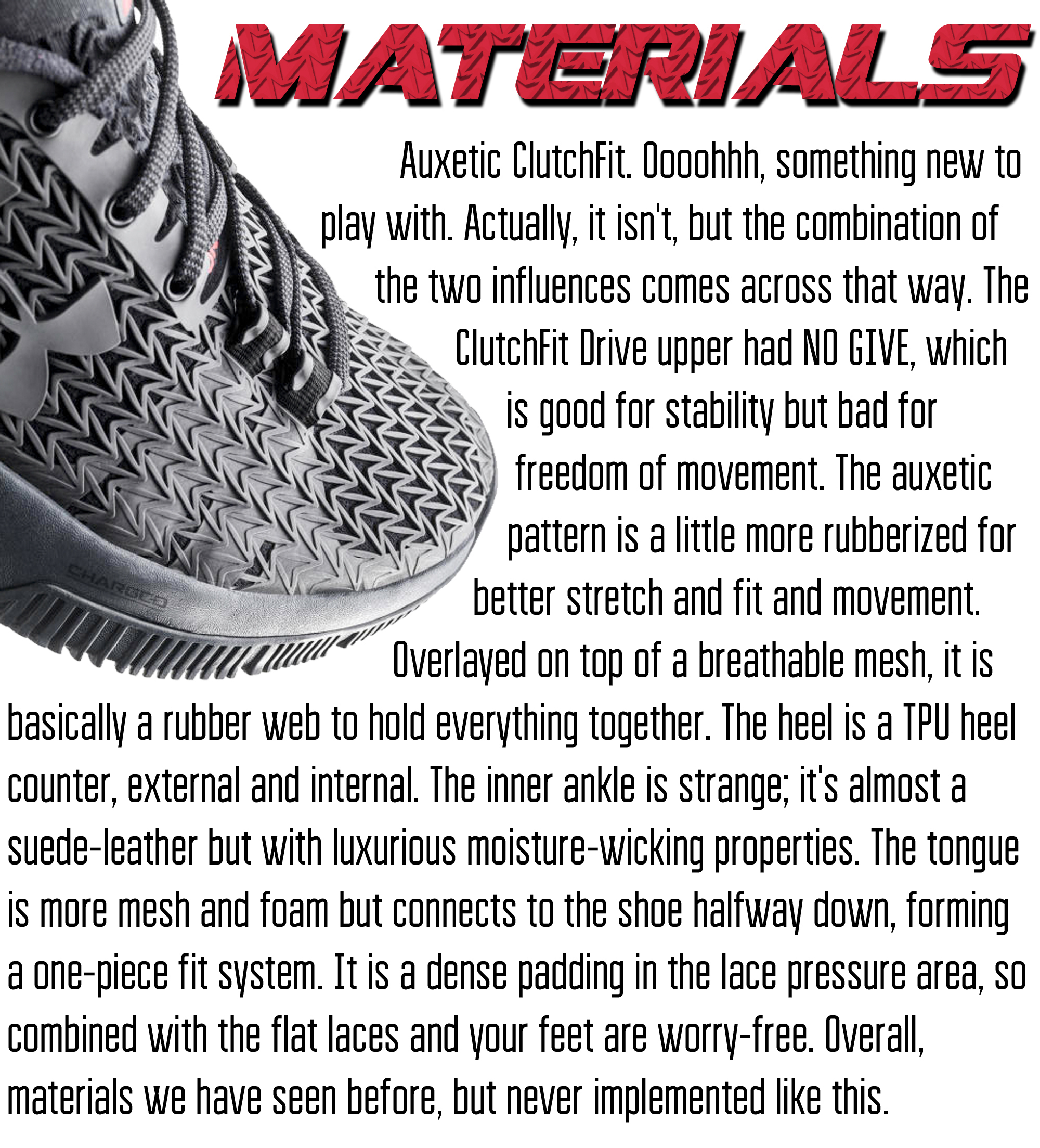
Auxetic ClutchFit. Oooohhh, something new to play with. Actually, it isn’t, but the combination of the two influences comes across that way. The ClutchFit Drive upper had NO GIVE, which is good for stability but bad for freedom of movement. The auxetic pattern is a little more rubberized for better stretch and fit and movement. Overlayed on top of a breathable mesh, it is basically a rubber web to hold everything together.
The heel is a TPU heel counter, external and internal. The inner ankle is strange; it’s almost a suede-leather but with luxurious moisture-wicking properties. The tongue is more mesh and foam but connects to the shoe halfway down, forming a one-piece fit system. It is a dense padding in the lace pressure area, so combined with the flat laces and your feet are worry-free. Overall, materials we have seen before, but never implemented like this.
Fit
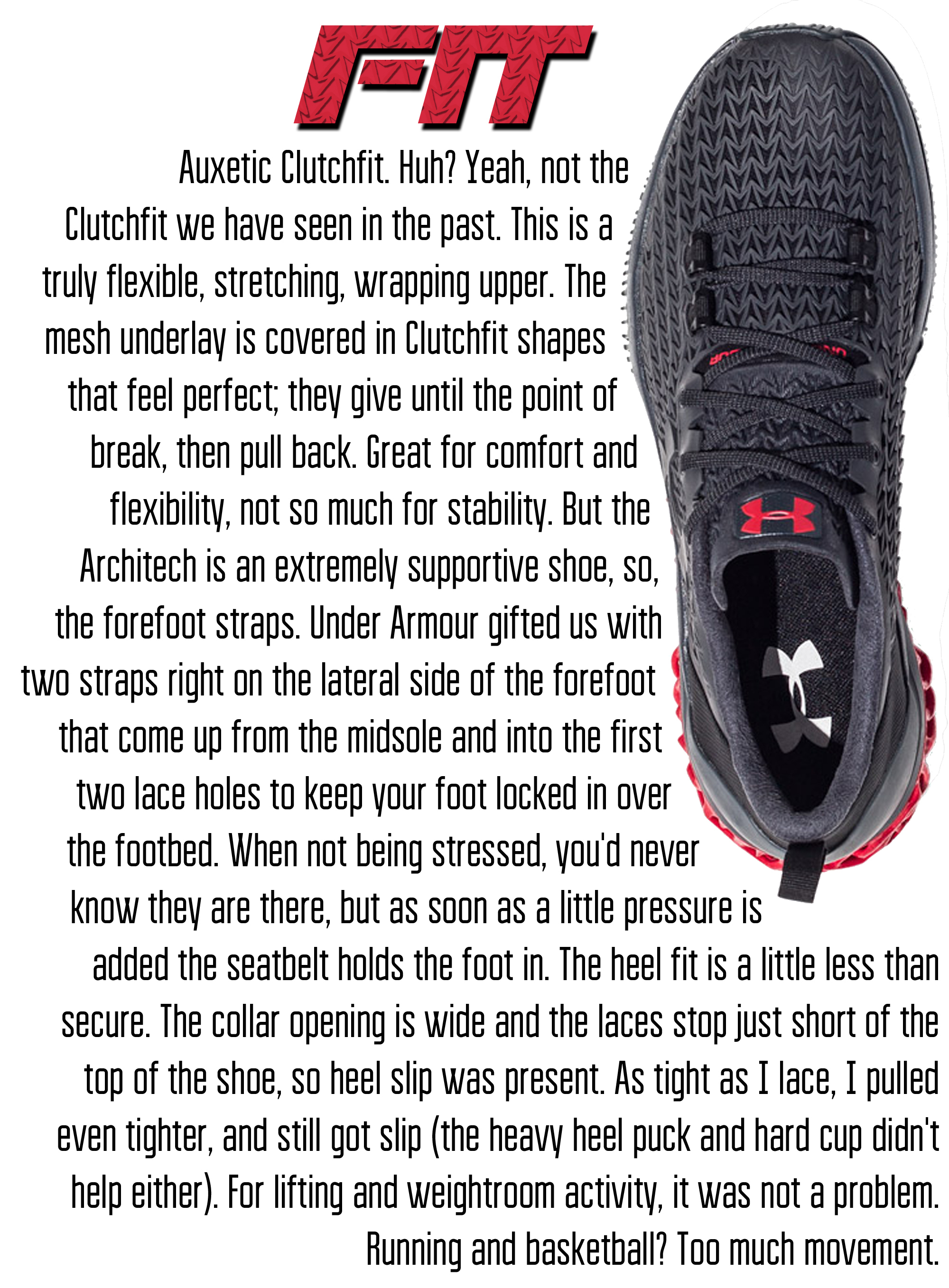
Auxetic Clutchfit. Huh? Yeah, not the Clutchfit we have seen in the past. This is a truly flexible, stretching, wrapping upper. The mesh underlay is covered in Clutchfit shapes that feel perfect; they give until the point of break, then pull back. Great for comfort and flexibility, not so much for stability. But the Architech is an EXTREMELY supportive shoe, so…the forefoot straps. Under Armour gifted us with two straps right on the lateral side of the forefoot that come up from the midsole and into the first two lace holes to keep your foot locked in over the footbed. When not being stressed, you’d never know they are there, but as soon as a little pressure is added the seatbelt holds the foot in.
The heel fit is a little less than secure. The collar opening is wide and the laces stop just short of the top of the shoe, so heel slip was present. As tight as I lace, I pulled even tighter, and still got slip (the heavy heel puck and hard cup didn’t help either). For lifting and weightroom activity, it was not a problem. Running and basketball? Too much movement.
Support
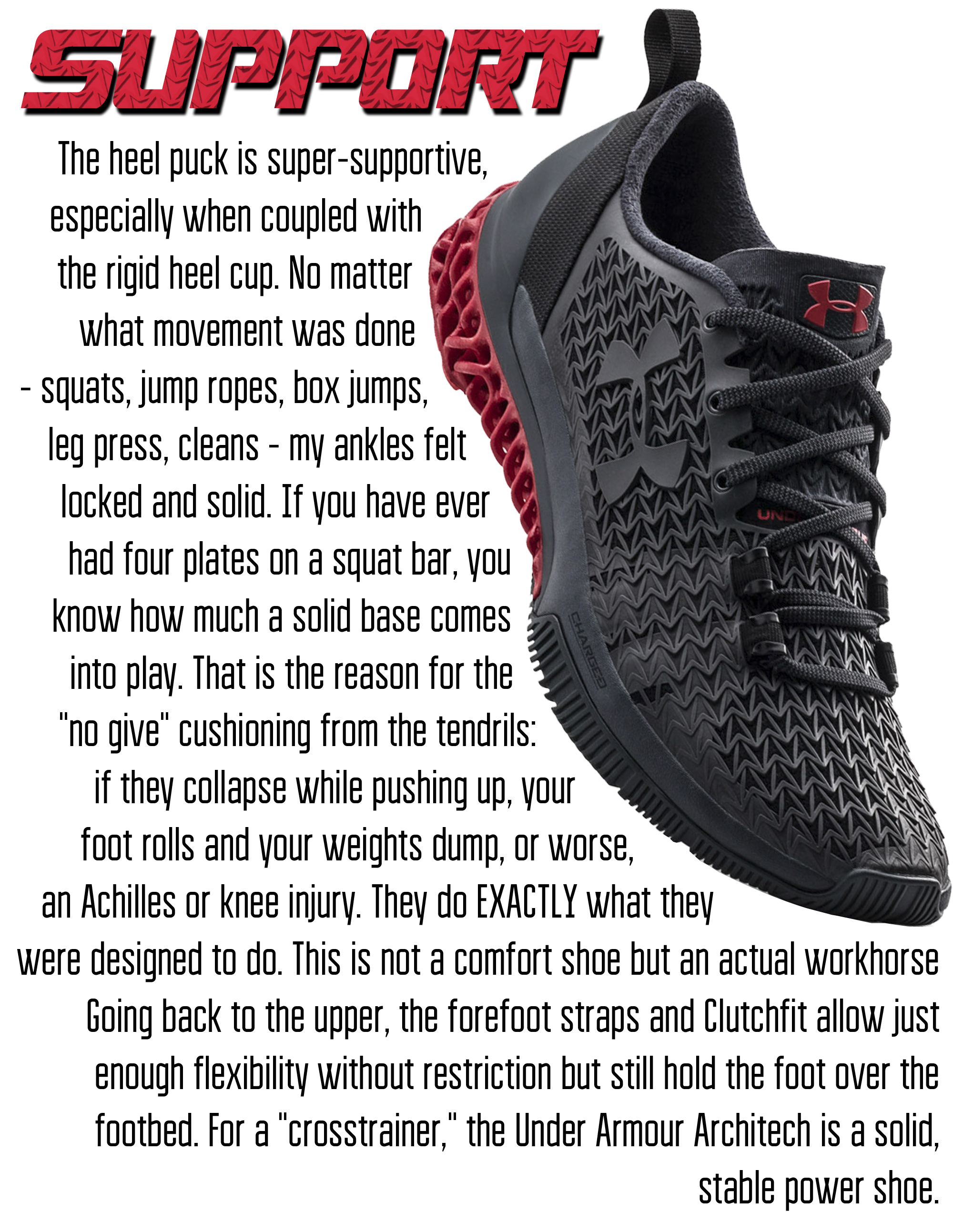
The heel puck is super-supportive, especially when coupled with the rigid heel cup. No matter what movement was done — squats, jump ropes, box jumps, leg press, cleans — my ankles felt locked and solid. If you have ever had four plates on a squat bar, you know how much a solid base comes into play. That is the reason for the “no give” cushioning from the tendrils: if they collapse while pushing up, your foot rolls and your weights dump, or worse, an Achilles or knee injury. They do EXACTLY what they were designed to do. This is not a comfort shoe but an actual workhorse. Going back to the upper, the forefoot straps and Clutchfit allow just enough flexibility without restriction but still hold the foot over the footbed. For a “crosstrainer,” the Under Armour Architech is a solid, stable power shoe.
Under Armour Architect Overall
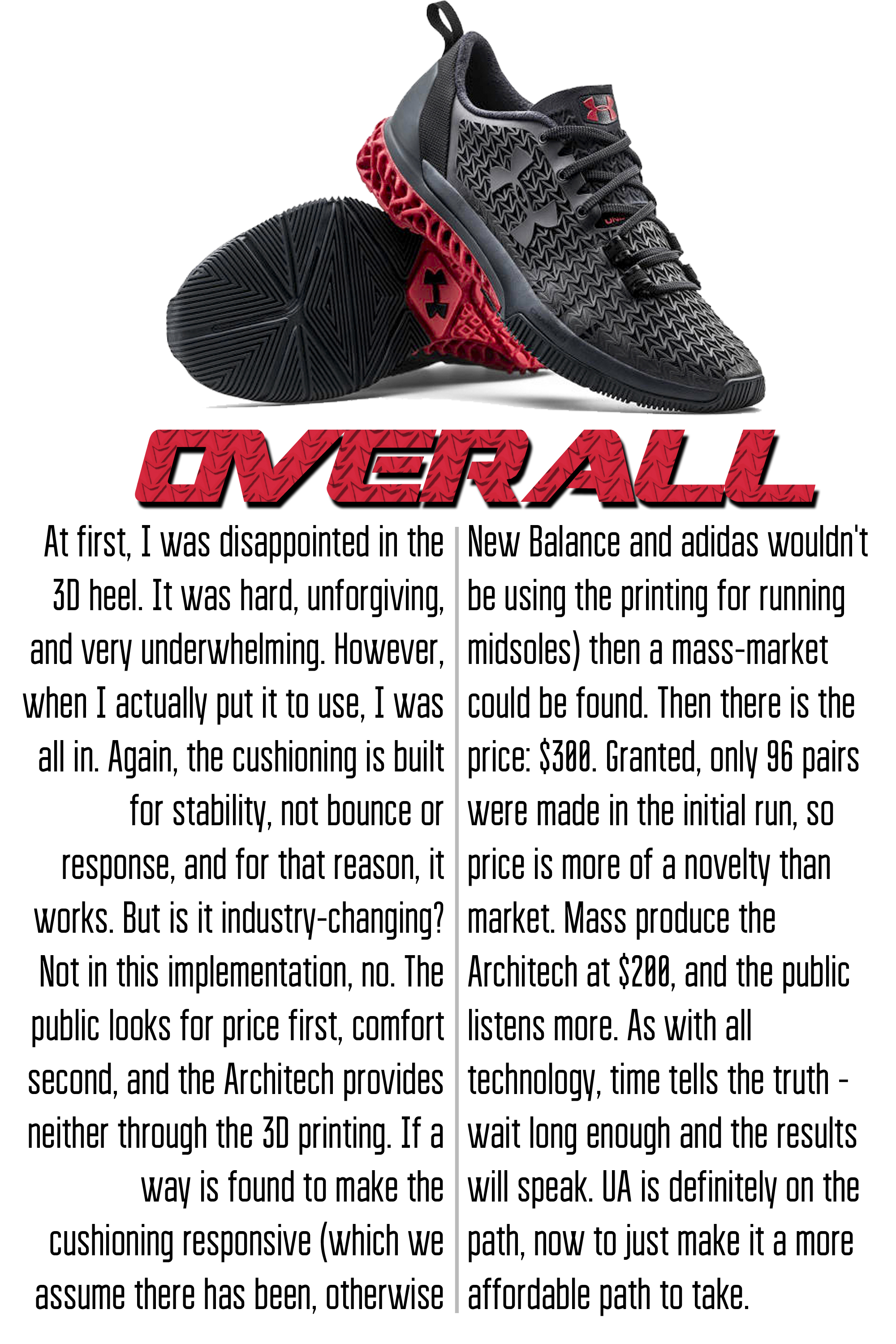
At first, I was disappointed in the 3D heel. It was hard, unforgiving, and very underwhelming. However, when I actually put it to use, I was all in. Again, the cushioning is built for stability, not bounce or response, and for that reason, it works. But is it industry-changing? Not in this implementation, no. The public looks for price first, comfort second, and the Architech provides neither through the 3D printing. If a way is found to make the cushioning responsive (which we assume there has been, otherwise New Balance and adidas wouldn’t be using the printing for running midsoles) then a mass-market could be found.
Then there is the price: $300. Granted, only 96 pairs were made in the initial run, so price is more of a novelty than market. Mass produce the Architech at $200, and the public listens more. As with all technology, time tells the truth — wait long enough and the results will speak. Under Armour is definitely on the path, now to just make it a more affordable path to take.

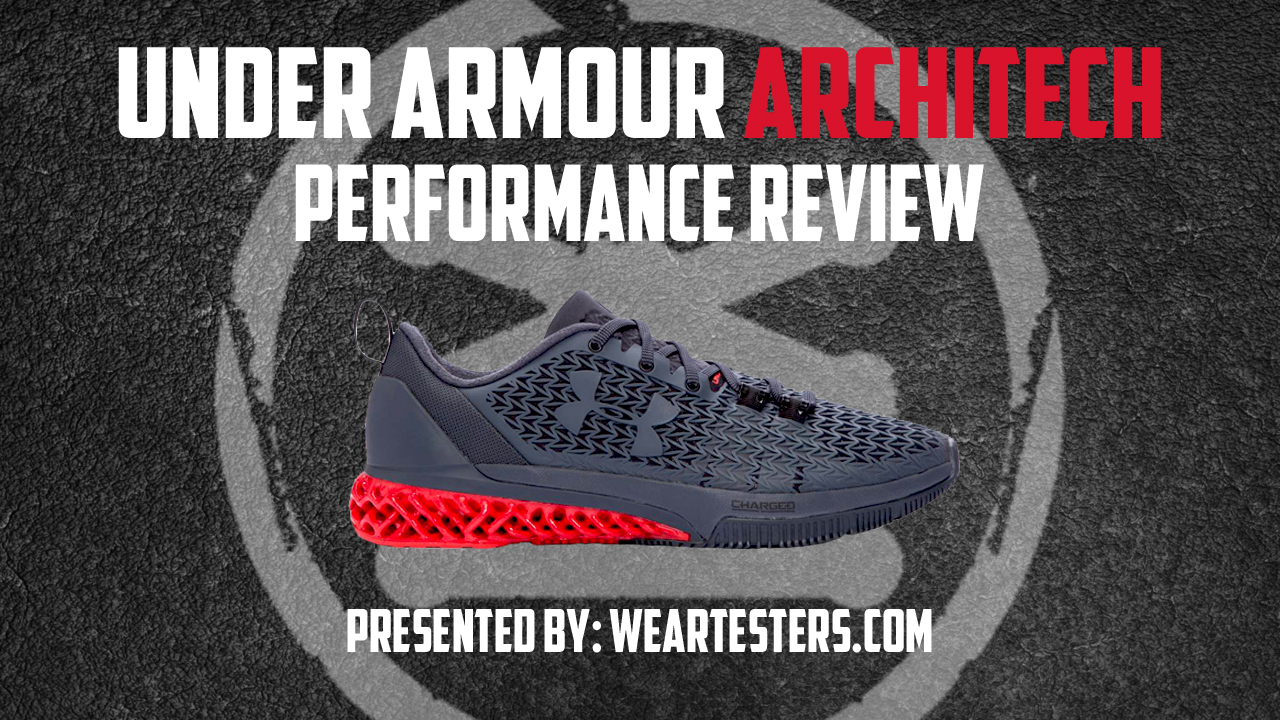
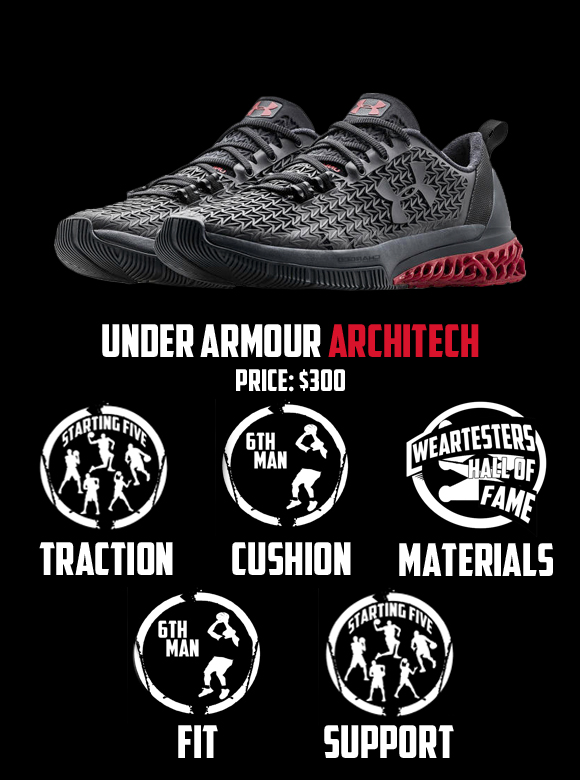
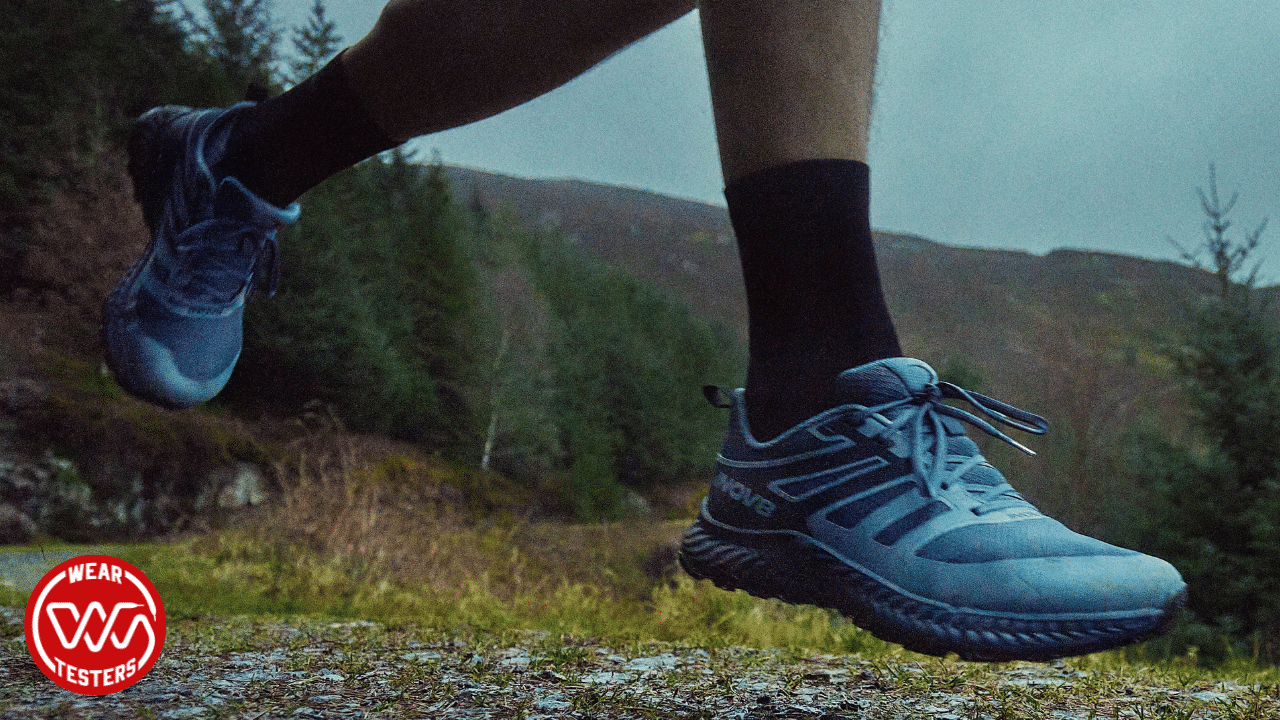
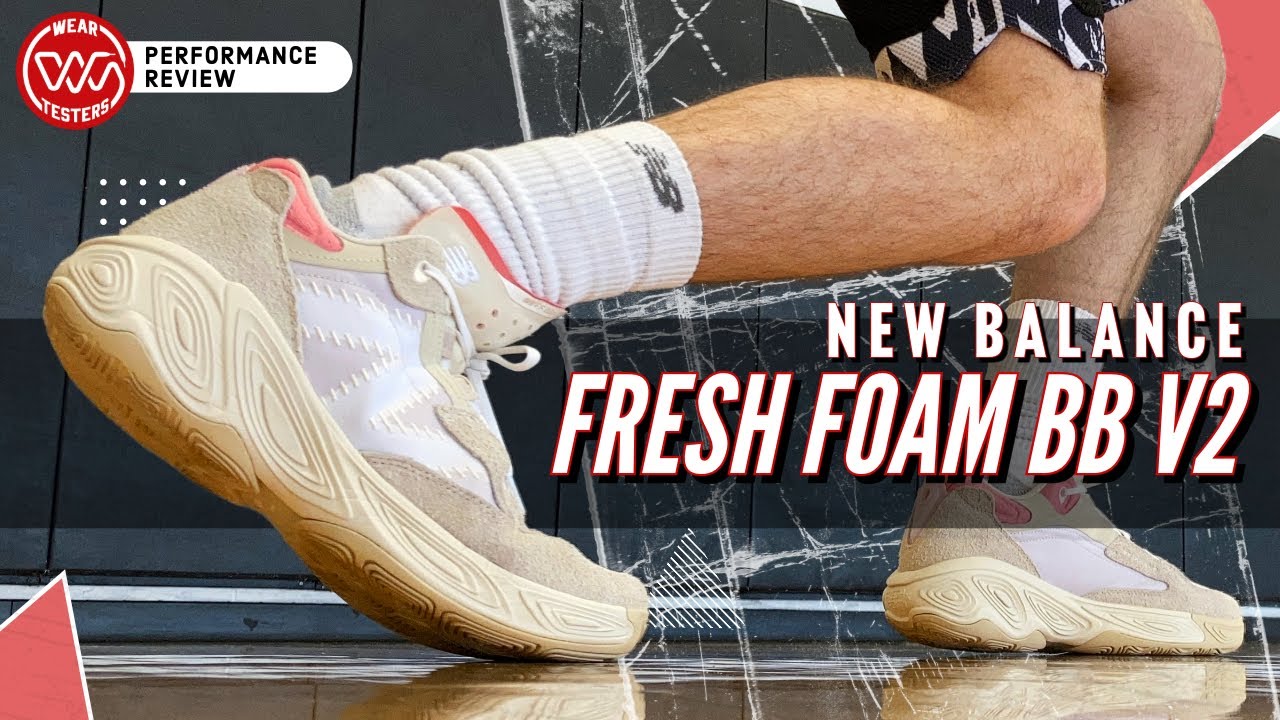
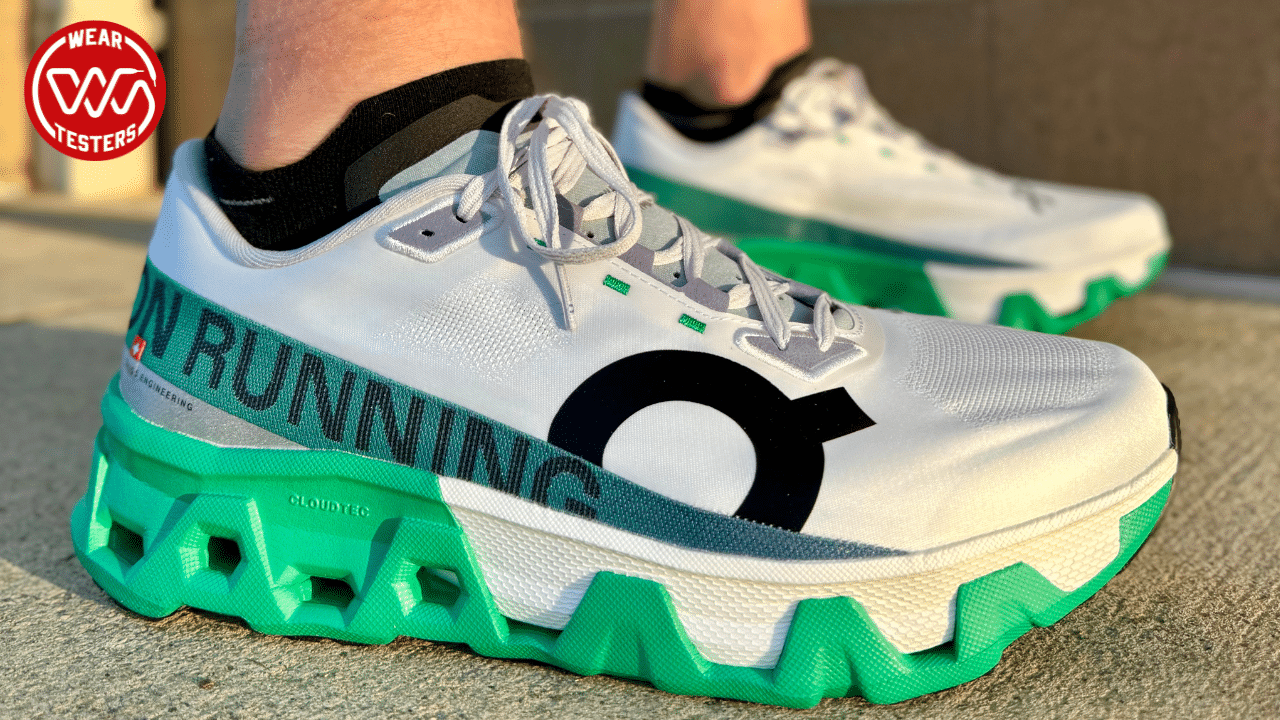
Very thorough review bryan! Great job as always! One thing though. Do you think it might be better if the page 2 link is placed on top for users opting for classic written format and those unaware will be able to see the option faster?
This was an interesting review bro. As mentioned, this particular shoe was hard to get, limited, expensive, etc but it does potentially open the door for the future so seeing how these did was an interesting look. Thanks for the continued work and I hope that the body is holding up. Take care.